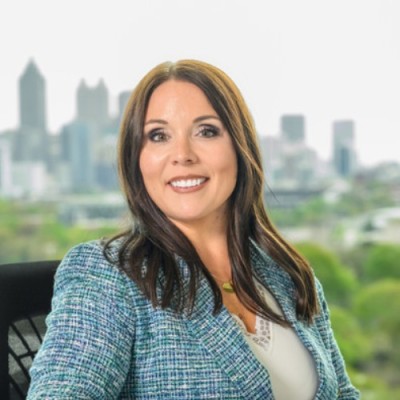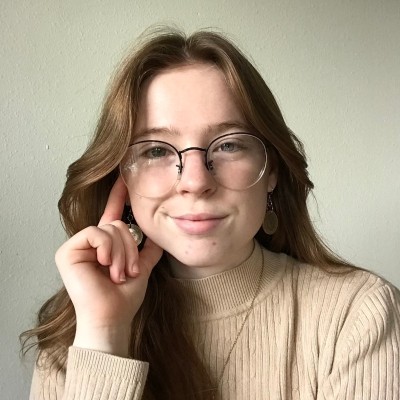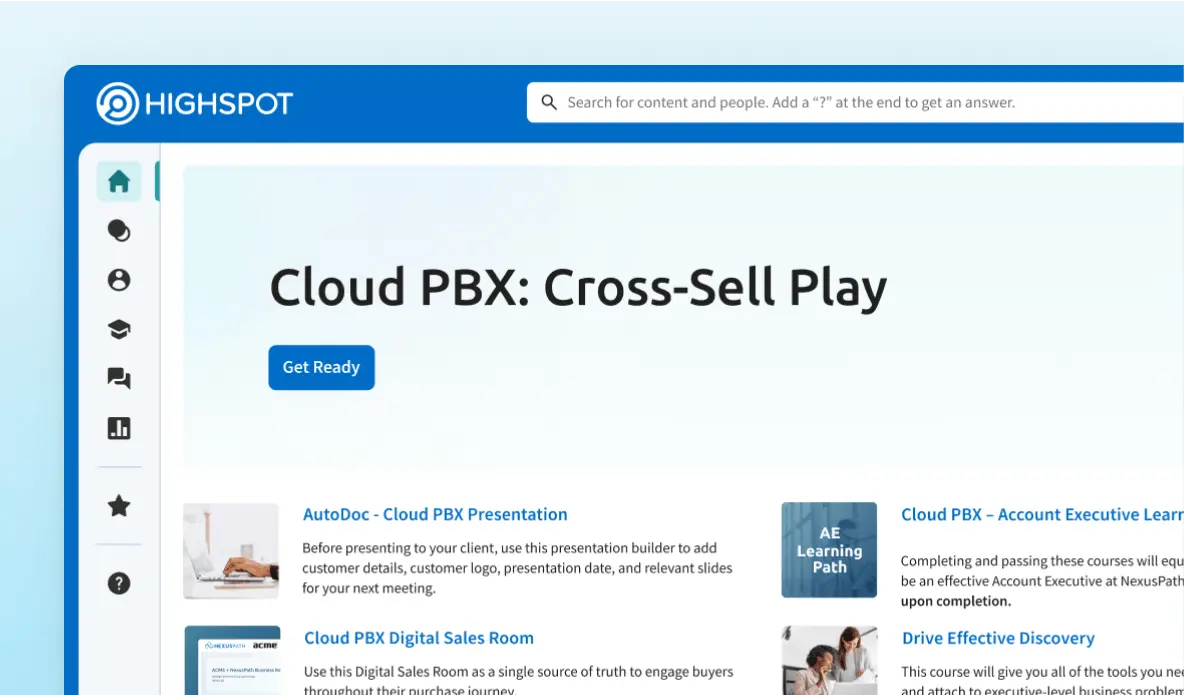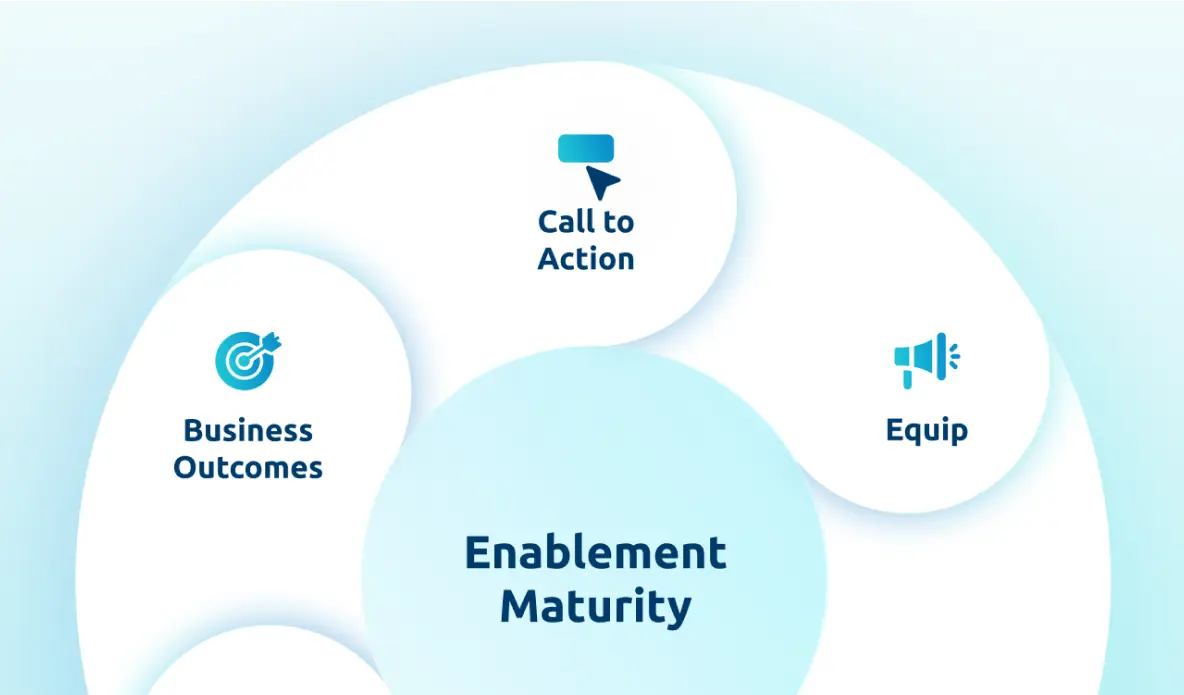According to the GTM Performance Gap Report, 98% of leaders say their GTM strategy is active, but only 10% see it driving results. So how can organizations bridge this gap and turn strategy into meaningful execution that drives outcomes?
Riley Rogers: Hi, and welcome to the Winland Podcast. I’m your host, Riley Rogers. Join us as we dive into changing trends in the workplace and how to navigate them successfully.
Here to discuss this topic is Becky Payne, Vice President of Sales and Success Digital Enablement at Sage. Thank you so much for joining us today. Becky, we are super excited to have you. As we kind of get things kicked off, I’d love it if you could just start by telling us a little bit about yourself, your background, and your role.
Becky Payne: Absolutely. Well, thank you so much for having me on the Win-Win podcast today. A little bit about me and my background. I’ve been at Sage for seven years. I’ve been in corporate America for almost 17, and what I can tell you is. When you really get under the hood of go-to market, that’s really what makes an organization home, right?
And so my experience and my background is a lot of understanding the channel, a lot of understanding how go-to market works in real life, which is a phrase I like to use quite a bit. As well as then understanding how that connects into our strategy as we think about where we need to drive transformation to get to our ultimate outcomes along the way.
My role at Sage is very unique. I sit in our routes to revenue organization, and so I get the privilege of enabling our go-to-market teams to drive the revenue that they need to and the various motions and go-to-market aspects of what they do every day.
RR: Amazing. First of all, I love the Routes to Revenue team. That is the best team name. Based on what you’ve said here, it seems like we’ve got a lot to dig into. As you mentioned, you’ve got a pretty extensive experience in both channel and sales enablement, so can you walk us through how you journeyed into sales enablement, and now that you’re here, how that background influences your strategy today?
BP: Well, I think my experience is probably a little bit of a unique one, but I’m happy to share it. So prior to this role, I actually served as our chief of staff or business executive in the North America space, and prior to that actually for our global partners and Alliance leader. So I have spent a significant amount of time in both of those spaces, and what I was able to identify is that.
We had the most brilliant pieces of technology out there. We had the most brilliant strategies out there, but we didn’t have a great way of connecting those into the workforce every day to get them to drive the outcomes that the business really needed to see. So coming into this role, first of all, I think I have the best role at Sage, so I love to brag about what my team does.
But what we get to do is we get to connect in with solving real world problems. We get to work with these sellers and these channel partners every single day to be able to deliver incremental value into what they do directly in relation to the customers, but also then how we make them operationally efficient in their day-to-day activities to be able to execute on that go-to-market strategy.
RR: It seems like we got the exact right person to talk about the strategy and execution gap. I think you mentioned everything that I hope to cover, so super excited to dig into how you’re making that all this happen. Before we get into kind of the fix it strategies, I’d love to start with where we are today.
So as you’re looking across the go-to-market stage and seeing some of the obstacles that pretty much every team is encountering in their day-to-day, what are some of the top challenges to sales success that you’re seeing? And then how are you addressing those challenges for both internal reps and channel partners?
BP: Well, I don’t know that we have enough time today to get into all the details, but, but when you really think about it, it’s common in a lot of places, right? Yes, we might be in the high tech world, but a lot of what we’re experiencing is what is happening across the globe today. So if you think about it, a lot of our, both internal sellers, as well as our channel executives and partners, actually are experiencing information overload.
And quite honestly, they’re not able to make the understanding of where that information overload then meets the relevance. Impact driver for what they’re dealing with every day. You know, a lot of our colleagues are flooded with content tools, data galore. We have a very, very data rich infrastructure here, which is amazing.
However, the challenge isn’t access. To that, right? It’s really the precision and the action that they’re taking on that. We also have a bit of a previous history in having some consistency gaps when you think about that, right? So both direct teams and our channel partner teams that are out there selling and they’re engaging with these customers.
Until recently, we didn’t really have a global blueprint. We didn’t really have a ton of global sales place, so we had a, a large inconsistency in how things were showing up, which their format, how we were measuring those outcomes and those impacts couldn’t be aligned on the day-to-day basis. We also are seeing a ton of pace of change.
I mean, every organization is experiencing not only the AI transformation and AI change, but overall as a team at Sage, we experienced a significant amount of transformation in the last 24 months. So we’re kind of embracing that as we see a lot of the challenges as we embrace the AI transformation that’s on our doorstep.
RR: You called out a couple things that I think most teams are gonna resonate with. Information overload, crazy pace of change, consistency issues across your channels. There’s a lot of noise out there, which makes it really difficult to create enduring, trusted relationships that drive the results you’re looking for.
So from your perspective, what are some of the key building blocks behind a strong, effective partnership with your channel teams?
BP: All right. This is one that goes a little bit like near and dear to my heart, right? What we have such a great ecosystem around us at Sage and such a great channel partner team, both internally and with our partners directly, is the clarity of the purpose.
And the incremental value that they add to Sage. A lot of times our managing director of North America, Mark Hickman, he references the one plus one equals three equation, and that’s generally how we feel with our partner ecosystem. We have the best partnerships and those best partnerships start when both sides are really clear on the outcome and the impact that we mutually drive together.
And what we’re able to see is when we do that in a very cohesive, consistent, and aligned strategic way from the leaders all the way down to the front line, we’re able to see incremental value driven through with and to our partners as well as back into Sage when you think about that bigger ecosystem play.
RR: Okay, so we’ve covered a little bit of the philosophy of alignment, outcome, shared outcomes. I’d like to talk a little bit about the execution piece, so how you’re bringing that strategy to life with technology. Can you walk us through how an enablement platform helps you better equip both the internal and the partner side of the house?
BP: Yes, this is where I nerd out just slightly ’cause this is absolutely what I love. So when you think about it, it does absolutely start with a unified go-to-market motion, which we have been able to deliver over the past year with my partner in crime, Mark Jackson. But we also have now, literally a couple weeks ago, launched our global unified enablement platform, which happens to be Highspot.
And what we were able to learn from that is when you take a consistent blueprint and go to market mission, right, and then you add that. The best platform that we can. Not only can we surface insights and leverage some of the AI technologies that Highspot is offering, but we also have an ability to have mutually shared documents, mutually, you know, shared Digital Sales Rooms.
Things that allow us to go to market together in an effective way that we’ve never had before. We really feel like this is a game changing strategy for us and really is a way for us to bring our blueprint, right, and that kind of strategy to life in the day-to-day execution. Some of the genomics aspects of your platform bring visibility into some of these sales plays and other items that we’ve never had before.
We can now go in and we can see what partners are engaging with us, who within those partners are engaging at a different way, allow us to provide reporting to senior leaders, but also at those frontline sellers. So they’re going into their weekly strategic team meetings with these partners with a strategy that’s very clear.
They’ve got content they can reference. They have points of which they can then articulate what is or is not working in sales plays and other things, and we’ve never had that capability before.
RR: Well, that’s absolutely what I love to hear that the platform is becoming such a game changer for you guys, and you’re already seeing that difference between before and after.
One thing I’d like to double click into what you said there was that you’re starting to dig into Highspot AI capabilities. So can you share how you’re building some of those features into your enablement strategy and then where you’re eventually hoping to go with them?
BP: The future’s endless, right? Endless possibilities is where we’re hoping to go. But if you think about something like Sage, we are a global business. We do, you know, a significant amount of business across the world, but we also have, oh gosh, 160 ish products across the world. So when you think about how vast our content repository is, when you think about how much information is actually out there for both our internal sellers as well as our channel teams, we really need to think about smart ways to drive the right visibility at the right time for that, thinking about how to get the right information in their hands in a very short amount of time.
You know, the name of the game for us is how do you drive the adoption? Drive adoption in a way that makes it make sense for how they’re using it in their everyday world. So things like the, you know, copilot plus features that has been game changing in and of itself. We cannot wait to get started with some of the content agents.
I have a very, very lean team, and when you think about that, investing in places that are operationally supporting things is not likely what we’re to make our next investment, right? This is all about how do I drive the efficiency of my team as well in the background to then enable all of these sellers and these channel partners to do more with what they have.
RR: Yeah. As somebody who also sits in the content world and deals with all of the wonderful governance tasks that come with that, I have to say I’m quite excited too, right there with you. Can I ask what it is about the platform that makes you such an advocate and really love to know?
BP: Okay. This is, um, I must confess, I love the platform for a couple of different reasons, to be honest with you.
First and foremost, I feel like it is one of the most dynamic. Adaptable platforms that I’ve seen where we have ideas, where we have, you know, thoughts for improvements, where we wanna take advantage of beta programs that you guys are offering. Everything is on the table with you guys, and it feels like a true open partnership when we’re having these discussions.
It’s one of the only consistent conversations that I’m in where you guys are asking, okay, what is your strategy, Becky? What is Sage’s strategy? What do we need to help you achieve? And that becomes a really meaningful way for us to adapt what our strategic objectives are. Via your platform, and then mutually come up with ways to help us drive that adoption and the success moving forward.
And a little bit of a shameless plug, I think I have one of the best account teams at Highspot. If there’s ever a crazy idea that we have, if there’s ever a way for us to try to bring something to life so I can try to get the feedback directly from our sellers, that has been the best thing with Matthew and Ed and Omar.
It just becomes a real dynamic partnership in seeing how much value we can mutually drive through this platform.
RR: It always makes us so happy to hear that. It really does feel like a true partnership, and I will certainly have to take that feedback back to your team. I’m sure they’ll be happy to hear it, but I’m sure they already know just how successful you’re feeling because looking at the data, you and your teams have achieved a really impressive 87% recurring usage rate, which is huge. So what are some of your best practices for driving that adoption?
BP: This one kind of goes back to basics, to be honest with you. So we really started with what matters most, right? So we decided as a strategic team, you know, working on the Sage account and then ultimately within the leadership team at Sage, what is it that we needed to drive value out of this platform, right?
We went out to a global RFP when we did this to define our global enablement platform. And so we really stuck to what those outcomes were that we were trying to get. First and foremost, when you think about the basics of adoption is. Old school is best when it comes to this consistent drum beep of updates.
Consistent visibility of metrics, consistent visibility of good wind stories. There is nothing better than that ground up swell when people start talking to their peers about how much better their life is because they’re using this platform or something like that. There’s also been a significant amount of leadership visibility.
This was a major investment for Sage, and we wanted to make sure that our leaders all the way down, we’re seeing the goodness. We’ve gone to the kind of executive level to bring visibility into. What’s out there, what’s happening, and also getting them licenses. Kinda giving them some quizzes along the way, making sure that they’re using it, making sure that they’re seeing the value in what it can provide back to these sellers and these partners, as well as making sure that we’re doing.
I’ll call it the flare around some of these announcements. You guys do a great job of consistently releasing features. We also then try to do a great job of bringing visibility into that so it keeps things fresh and new and users wanting to come back to the platform.
RR: I think you’re 100% right to say, you know. Bring it back to basics because no matter the size of the organization you’re at, nine times out of 10, word of mouth is gonna do far more for you than even the most well-planned launch. That trust from your users is huge. So fantastic advice. In addition to adoption, I know that for leaders like yourself, it’s a great metric.
It’s a good indicator, but it’s not the end all, be all that you’re looking at. So aside from adoption, what other metrics are you using to measure and optimize your enablement strategy?
BP: Woo. This is a great one. Adoption is absolutely key, but we’re also looking at new ways to get feedback around the productivity, the efficiency, and honestly with this platform, the efficacy that it can deliver for our internal sellers through their go-to market motions.
So things like, what does the revenue per head look like? Or, you know, how long are they spending? What’s the metrics it takes? For them to be able to get the content that they’re looking for. How many times are they researching, you know, to get the same outcome that they need. There’s also a lot to be said for when we’re in different offices or if different sellers and partners, you know, we have the chance to get in front of them.
We’re often asking the question, you know, what do you like about it? What could you change? What would you do differently? And we’re really open to that feedback to help us refine where our strategy is going to go so that the end user feels heard. There is no better way to know where you need to go or what you need to do to drive the consumption overall and the kind of value outta that tool than hearing people that need to use it every single day, hear where they have some feedback and some improvements on.
RR: So knowing you’re keeping that close pulse on your teams, how they’re engaging with the platform, the value they’re seeing, the things they’d like to see improve. I’d be curious to know kind of where things are today. So since you’ve launched Highspot, what key results have you achieved? What wins have you seen or. Any achievements that you’re particularly proud of you’d like to share?
BP: Yes, absolutely. So again, I think the genomics aspect of this makes it incredibly valuable. We are also just weeks away from our sales kickoff for North America, and as part of that we are going to do an AI pitch perfect aspect with the AI role play that is in the platform.
And so we will then be doing a leaderboard for the various segments. Across the business in North America to see who is already able to find the materials that they need for their AI pitch perfect aspect, but then also see how they engage with the AI agent to be able to do their role play and get a leaderboard going.
So that’s what we’re probably most excited about for that one. And we kind of got the idea after the Cloudy Carly role play that you guys actually had at Spark. So we shamelessly borrowed a couple of those ideas and we’re really excited to see how we can bring that to life at Sko.
RR: Amazing couple things there. One, thank you for taking the time to chat with us when you have SKO just around the corner. Appreciate that. And two, I will have to check back in with you because I would love to hear how that’s going. Last question for you to close this out. What is one piece of advice that you’d share for other leaders like yourself that are looking to close the gap between strategy and execution?
BP: I think the biggest piece of advice would just be to get started. I think if we go back to the basics and we think in Inc. And you really think about where we need to take a transformation, a large organization like Sage, and you connect what they do every day into that strategy, it’s just to get started, right?
I mean, there’s a thousand ways you can do things. Not all of them are gonna work out. But the longer you sit there and you look at it on paper, the longer it’s gonna take for you to have that impact. So when you get started and you get people excited and bought along on that journey of what you’re doing, magic can happen.
RR: I think that’s perfect advice to close with. You know that don’t boil the ocean philosophy. Just get started. Something is better than nothing. Progress is better than planning on planning on planning. Perfect. Becky, thank you so much for joining us. It has been an absolute pleasure.
BP: Thank you so much for having me. Can’t wait for the next one.
RR: To our audience, thank you for listening to this episode of the Win-Win podcast. Be sure to tune in next time for our insights on how you can maximize enablement success with Highspot.




